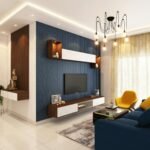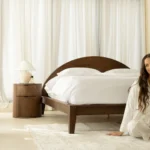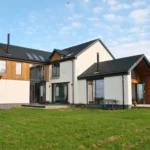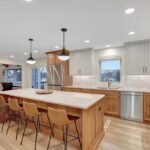How to Plan Locations of Recessed Can Lights in Living Areas
Adding properly located recessed can lights in your living room in which you watch TV, read, write essays ceiling can create a completely new ambiance you follow a few simple design guidelines.
You don’t have to spend thousands on new furnishings or remodeling to give your living room a fresh, modern, and inviting appeal. Simply upgrading your lighting can create a completely new look. In fact, with well-designed recessed can lighting you can vary the room’s mood from warm and cozy to bright and festive with the flip of a few switches.
Lighting Functions
Begin by thinking of room lighting in three categories: general lighting, task lighting, and accent lighting.
- General lighting illuminates a room for ordinary activities without focusing on any area in particular.
- Task lighting concentrates on a work or reading area.
- Accent lighting brings attention to decorative features of the room.
When planning lighting for a living room, start with accent lighting, and then task lighting. In some cases, the combination of these two may provide sufficient room light so that additional general lighting isn’t needed.
Identifying Opportunities and Needs
Begin by identifying the decorative features in your living room you’d like to emphasize. For example:
- Fireplace or mantel
- Wall area with artwork
- Side table featuring heirlooms or memorabilia, or other types of “displays”
Next identify places in the room where someone might spend time reading or working, such as at a:
- Desk
- Countertop
- Couch, or chair
After planning the placement of lights for these specific areas, you can then determine if any additional general lighting is required. If you’re looking to go a bit more out there with your lighting, you might want to install a smart light switch. If this interests you, you can view a roundup of the best smart light switches on a site like iDisrupted.com. This way, you can make the best decision possible on how to properly light your home.
Taking Lamps Into Account

Keep in mind that table lamps and floor lamps will be an integral part of your overall lighting plan. Properly placed, lamps can provide excellent task lighting for a desk, couch or chair. Several lamps in a room, when combined with recessed ceiling accent and task lights, can also provide adequate general lighting. Before beginning to plan recessed can light locations, identify where you will use lamps.
Accent Lighting

Next, look at your accent lighting opportunities. In these areas, your recessed fixtures will typically be eye-ball lights that can be turned and pointed toward the wall or slightly downward to light a table-top display. Locate accent lights approximately 24 inches from the wall.
If the wall area you’re featuring is 36 inches or wider, plan on having multiple lights approximately 36 inches apart. For displays, plan on at least two lights 36 inches apart to keep from creating harsh shadows.
Task Lighting

If you have task areas where a lamp is not practical or desired, plan on a recessed spotlight. If the light is for a desk area or other element that may be rearranged in the future, be careful. It may be better to stick with a lamp that can be moved with the work area. Or you can strategically locate one or two additional spotlights where tasks may be located in the future, giving you flexibility in furniture arrangement.
Another way to create flexibility is to place several spotlights 4 feet apart along the same wall. These lights should be located approximately 21 inches from the wall so that they’re directly over the work areas. If the light ends up being behind you as you work, your shadow will be cast over your work area. Also, being close to the wall, the light can bathe the wall, providing reflected light for the room.
General Lighting

To determine if you’re going to need additional lighting, a general rule of thumb for living areas is 2 to 3 watts per square foot. Let’s look at this example for an 18 x 18 living room (324 square feet):
- Two three-way table lamps near seating areas with a maximum 150-watt bulb (300 watts)
- Two recessed 50-watt eye-ball accent lights on an art wall (100 watts)
- Three recessed 60-watt wall-washer lights along another wall (180 watts)
- One recessed 100-watt spot light above a desk area (100 watts)
The total so far is 680 watts or 2.1 watts per square foot. This would probably provide adequate general lighting when every light is on, but you may prefer more light on some occasions, or other options for mixing lighting effects.
In this example, consider adding four recessed 100-watt floodlights in a square pattern 6 feet apart and 6 feet from the walls. This provides even lighting throughout the room and provides 2.4 watts per square foot without using the lamps, and 3 watts per square foot when the three-way lamps are on medium (100 watts).





